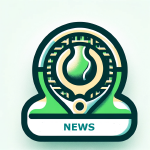Lindsey Vonn: A Case Study in Professional Resilience
Lindsey Vonn: A Case Study in Professional Resilience
How athletes at any age can align habits, strategy, and identity for peak performance
Just as tennis has its global professional tour, so does alpine skiing. The World Cup Tour is relentless, demanding peak performance across changing terrain, weather, and pressure—and age rarely does athletes any favors.
So when Lindsey Vonn, at 41, returned to win a World Cup downhill race against the best in the world, it was nothing short of extraordinary. The equivalent in tennis? Imagine Navratilova reappearing to beat Sabalenka on center court. It wasn’t just impressive—it was instructive.
For serious tennis players, Vonn’s win is a masterclass in how to extend performance, manage change, and compete. Her return offers five specific lessons relevant to any high-level player, especially those navigating transitions: returning from injury, evolving their game, or extending a career into later years.
1. Preparation Is Reinvention, Not Just Recovery
Vonn’s result wasn’t a fluke. It was the product of deep, deliberate preparation.
She openly admitted she needed time to adjust to her equipment and rebuild her physical condition. She even brought in a new coach—former World Cup star Aksel Lund Svindal—to reset her approach.
In tennis, this underscores a broader truth: the off-season is not downtime. It’s development time. That might mean refining footwork patterns, installing more tactical variation, or experimenting with different racquet setups that better suit your evolving game.
2. Start Slow, Finish Strong
Vonn didn’t win by nailing the top section of the course. In fact, she started cautiously. But midway down, her speed surged—she closed with authority.
This mirrors the arc of many tennis matches. You don’t need to dominate early to win. Great players manage momentum, adapt to conditions, and finish with precision. The ability to reset mentally, adjust tactically, and execute late is often the true separator at higher levels.
3. Age Isn’t the Opponent—Outdated Systems Are
At 41, Vonn became the oldest woman to win a World Cup race. But this wasn’t about “defying age.” It was about designing a training system that suited her current reality—one that optimized her strengths and protected her body.
In tennis, where careers are now stretching into the mid-30s and beyond, success comes from intelligent adaptation: managing recovery cycles, focusing on efficiency, and training with a purpose. Sustainable success comes from well-built systems—not just lofty goals.
4. Identity Drives Behavior
Vonn didn’t come back just to compete. She returned because she still saw herself as a world-class athlete. Her behaviours—her daily habits, her training environment—reflected that identity.
For competitive tennis players, this principle is critical. Performance habits stick when they reinforce how you see yourself. If your identity is “I’m a focused, strategic competitor,” your behavior will align. Identity leads; outcomes follow.
5. Pressure Can Be Trained
On race day, Vonn delivered with a packed leaderboard behind her. The moment didn’t shrink her—it sharpened her.
This level of composure isn’t luck. It’s built. Tennis players can train the same skill: through prematch routines, pressure-specific drills, and techniques like the “tennis ball squeeze,” which has been shown to help maintain motor control under stress.
The ability to execute under pressure isn’t just mental—it’s methodical.
Wrap
Lindsey Vonn’s return wasn’t just inspiring. It was methodical. Strategic. Professional.
She didn’t rely on raw talent or nostalgia. She built a system. She clarified her identity. She prepared with intent. And she competed with purpose.
For high-level tennis players, her story isn’t just motivational—it’s a roadmap. Success at any age comes not from defying time, but from designing the right approach.



